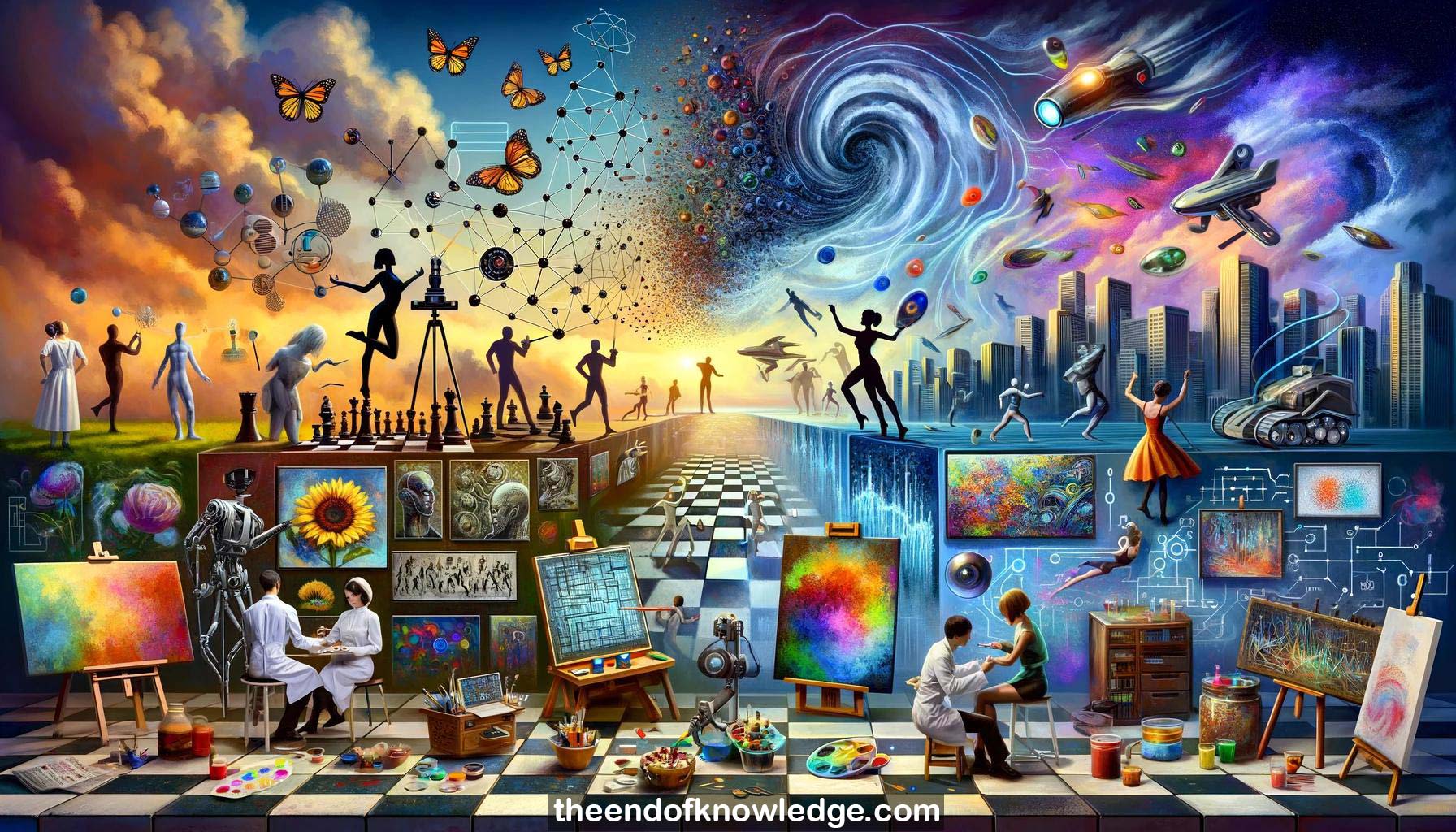 >
>
Concept Graph & Resume using Claude 3 Opus | Chat GPT4 | Gemini Adv | Llama 3:
Resume:
1.-Adversarial machine learning uses game theory instead of just optimization. Players have competing costs and seek a Nash equilibrium.
2.-Generative Adversarial Networks (GANs) generate new samples from a data distribution via a minimax game between generator and discriminator.
3.-GANs have rapidly improved since 2014 to generate high-quality, high-resolution images from complex datasets like ImageNet.
4.-Unsupervised image-to-image translation with GANs, like turning day scenes to night, is possible without paired examples.
5.-Video generation GANs can make temporally coherent videos, e.g. transferring dance moves between people.
6.-GANs enable creativity in realistic image generation without requiring photorealistic artistic skills, via labeled semantic maps.
7.-GANs are starting to have physical world applications like 3D printed dental crowns. Fashion design is a future possibility.
8.-Recent GAN advances include scaling up models, incorporating style transfer, and reducing supervision to ~10% labeled data.
9.-For secure ML, models must be robust when the IID assumption is violated by an attacker's adversarial examples.
10.-Adversarial training, finding an equilibrium between attacker and model, is a key current defense against adversarial examples.
11.-Model-based optimization, e.g. maximizing a learned surrogate model's prediction, is challenging due to adversarial examples but has potential.
12.-Model-based optimization has designed genes/proteins that bind well in simulation. Real-world medical applications may follow.
13.-Reinforcement learning has always involved adversarial self-play, e.g. Arthur Samuel's 1950s checkers agent.
14.-Self-play RL remains important in systems like AlphaGo, but non-symmetric games and producing useful side-effects are key recent focuses.
15.-Adversarial examples for RL exist, e.g. perturbing Atari frames to degrade agent performance a few timesteps later.
16.-Learning reward functions with GAN-like models can help specify complex RL tasks, e.g. a robot painting specific characters.
17.-Extreme reliability needs more than current ~99% ML accuracy. Adversarial ML's worst-case focus may help, like in robust distributed systems.
18.-Analyzing worst-case performance curves may enable provable robustness guarantees exceeding observed average performance.
19.-Verification tools originally for proving adversarial robustness are being applied to practical systems like air traffic control.
20.-Improving label efficiency is crucial since labeling is often expensive or risky, e.g. in healthcare.
21.-Semi-supervised GANs with a classifier discriminator can leverage unlabeled data to improve sample efficiency.
Knowledge Vault built byDavid Vivancos 2024